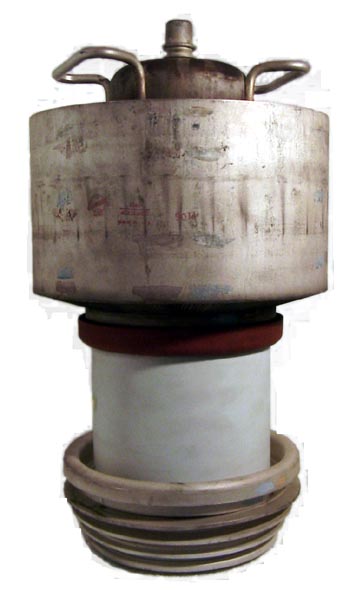
There are still many hollow state (AKA tube type) transmitters floating around out there in the broadcast world. High power, especially high power FM transmitters are often tube types and there are many good attributes to a tube transmitter. They are rugged, efficient and many of the well-designed tube units can last 20-25 years if well maintained.
The downside of a tube transmitter is tube replacement. Ceramic tubes, like a 4CX20,000 or 4CX35,000C cost $6-9K depending on manufacture. A well-maintained tube and last 3-4 years, I have had some lasting 8 years or more. My personal record was for a 4CX35,000C that was a final PA tube in a Harris MW50A transmitter. The tube was made by EEV (English Electrical Valve, now known as E2V) and lasted approximately 84,000 hours, which is 9.58 years. When it finally came out of service it looked like it had been through a fire, the entire metal plate body was dark blue. I took it out because the power was beginning to drop a little and it was making me nervous.
This was not an accident, I did it by maintaining the filament voltage and keeping the tube and transmitter clean. The tube filament supplies the raw material for signal amplification. Basically, the filament boils off electrons, which are then accelerated at various rates and intensities toward the plate by various control grids. The plate then collects the amplified signal and couples it to the rest of the transmitter. When a tube goes “soft,” it has used up its filament.
I had a long conversation about this one day with Fred Riley, from Continental Electronics, likely the best transmitter engineer I have ever known. At the time, the consensus was to lower the tube filament voltage by no more than 10%. On the 4CX35,000C, the specified filament voltage is 10 volts, therefore, making it 9 volts was the standard procedure. What Fred recommended was to find the performance “knee,” in other words, where the power began to drop off as the filament voltage is lowered. Once that was determined, set the voltage 1/10 of a volt higher. I ended up running that EEV tube at 8.6 volts, which was as low as the MW50’s filament rheostat would go.
The other important thing about tubes is the break-in period. When installing a new tube, it is important to run only the filament voltage for an hour or two before turning on the plate voltage. This will allow the getter to degas the tube. New tubes should be run at full filament voltage for about 100 hours or so before the voltage is reduced.
Tube changing procedure:
- Remove power from transmitter, discharge all power supply caps to ground, hang the ground stick on the HV power supply.
- Remove the tube, and follow manufacturer’s procedures. Most ceramic tubes come straight up out of their sockets (no twisting).
- Inspect socket for dirt and broken finger stock. Clean as needed. Finger stock, particularly in the grid section, is important for transferring RF. Broken fingers can lead to spurs and other bad things
- Insert new tube, follow manufacturer’s recommendations. Ceramic tubes usually go straight down, no twisting.
- Make all connections, remove grounding stick, half tap plate voltage supply if possible, close up transmitter
- Turn on filaments and set voltage for manufacturers’ recommended setting. Wait at least 90 minutes, preferably longer.
- Turn on plate voltage and tune transmitter. Tune grid for maximum current and or minimum reflected power in the IPA. PA tuning should see a marked dip in the PA current. Tune for dip, then load for maximum power.
- Turn off transmitter, retap plate supply for full voltage
- Turn on transmitter and plate supply, retune for best forward power/efficiency ratio.
- After the 100-hour mark, reduce filament voltage to 1/10 volt above performance knee.
Of course, every transmitter is slightly different. There may not be a dip in the plate current if the transmitter is running near its name plate rating, in which case one would tune for maximum forward power.
This system works well, currently one of the radio stations we contract for has a BE FM20T with a 4CX15,000A that has 9 years on it, still going strong.


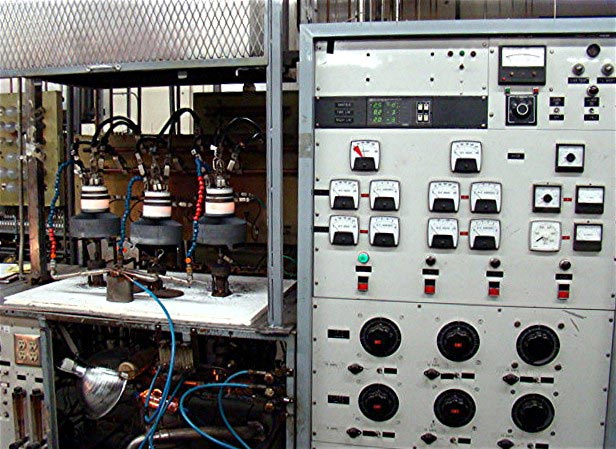
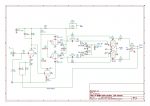
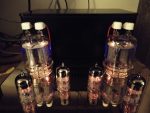
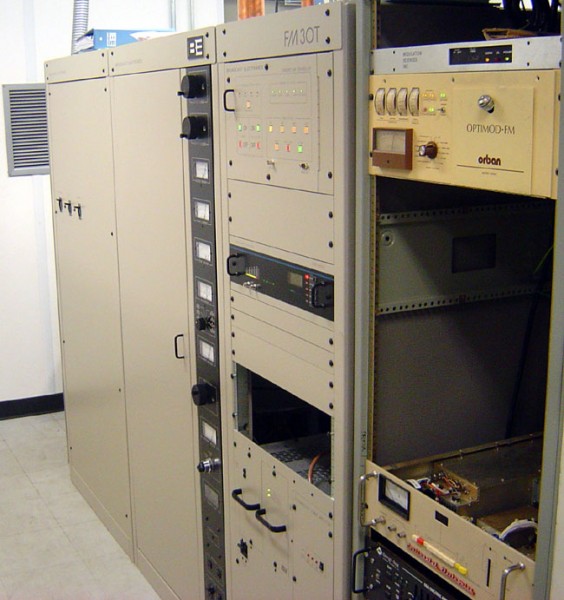
Reid Brandon of EIMAC was at the NAB show handing out an excellent book called “Care and Feeding of Power Grid Tubes”. Over the years we have experimented with different brands of transmitting tubes to see which ones lasted the longest. We found the Amperex tubes made at their plant in Hicksville, LI, NY to be of extremely high quality. Their 8560A tubes lasted longer than the inventor’s (EIMAC) types! We also found Westinghouse (Elmira, NY) to be of high quality also, especially 833A, 807, and 6146 types. Svetlana (post USSR) made some 8560A tubes that got better as time went on; however their attempt at making 8874 triodes was a disaster. The Chinese tubes appear to be the worst with many 833A tubes being imported that were simply horrible. Another old name “Taylor Tubes” has made a comeback, but you guessed it, “Made in China”. It would appear that EIMAC has remained loyal and faithful to making tubes and should be heralded! It is hard to believe that the United States doesn’t have the fortitude to continue with much tube manufacturing where the foreigners have. And with all the globalist junk being imported, I can see no reason why! The French came out with a diatrode for UHF TV, and very few transmitters adopted it. Now, suddenly the price has skyrocketed, and this type will be extinct! The solid-state transmitter designs leave much to be desired because of constant changes and obsolescence of solid-state devices. There is some force out there that simply wants everyone to follow the Bill Gates mentality by buying something new every couple of years ( i.e. transmitters), when our former American way was to build something to last and be serviceable over a long period of time. The GE BT-25 is such a transmitter. This is a product that put the USA in the driver’s seat post WWII. Carload after carload of Gates, RCA, Westinghouse, Collins, and other transmitters were sold all over the world. Today, the USA is a puny pup in manufacturing, and Lee Iaccoca sums it up very well in his book, “Where have all the Leaders Gone”.
John, I have a copy of that book somewhere. As I recall, there was a lot of design information in there, which is interesting in its own right. EIMAC had a bad production run about 8 years ago with the 4CX3500 series tubes, I had several brand new factory tubes go bad in a BE transmitter. I finally installed a rebuilt ECONCO and it worked fine for years.
Yes, and I have had problems with tubes made in the Eimac Salt Lake City Plant, namely 8874 triodes which were gassy upon receipt. I believe they have closed the Salt Lake City plant and moved everything back to California, which appears to be far better quality. However, in my opinion, some of the best tubes were made by Amperex in Hicksville, LI, NY. Our old Standard 938 (102.9 MHz.) had an Amperex 5924 final that was original from 1962, and ran until the new RCA arrived in 1972! And, by the way, the transmitter still put out full power!
Dear sir
Can you supply 4CX35000 New and Refurbished
Sorry, I cannot.
We have about a 24-29 month life on rebuilt 4CX20000A used in a BE FM30T. Of course the transmitter is in the middle of a field with marginal power. Just replaced a rebuilt Econco with another. It lasted 29 months before telling me to put it out of its misery. The only problem with the 30T is that it has a sweet spot that is some what complicated to get to. But we are back and will be adjusting the filament voltage down in about a week or so… Great article Paul!